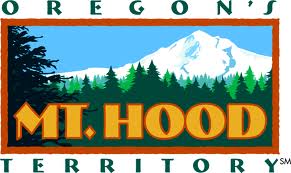Wilsonville: Gateway to the Willamette Valley
Boones Landing it was called.
 Wilsonville was settled in 1846 by Alphonso Boone, grandson of the legendary frontiersman Daniel Boone. Boone and his family were part of the “Great Migration” across the Oregon Trail. They were among the first to complete the final leg of the journey by taking the Scott-Applegate Trail west from Fort Hall into what is now southern Oregon, then north up the Willamette Valley.
Wilsonville was settled in 1846 by Alphonso Boone, grandson of the legendary frontiersman Daniel Boone. Boone and his family were part of the “Great Migration” across the Oregon Trail. They were among the first to complete the final leg of the journey by taking the Scott-Applegate Trail west from Fort Hall into what is now southern Oregon, then north up the Willamette Valley.
Boone started a ferry service across the Willamette River, then left for the California gold fields. His son Jesse operated the ferry for years and bolstered his business by blazing a trail north to Portland and south to Salem. It is known today as Boones Ferry Road. Jesse operated the ferry until 1872 when he was gunned down at the south landing in a dispute with a neighboring settler.
The community that sprang up near the ferry landing lost its name connection with descendants of Daniel Boone in 1880 when it was renamed Wilsonville after the town’s first postmaster, Charles Wilson.
Wilsonville has always been at a transportation crossroads. The ferry operation, one of the first across the Willamette, was the critical link for trade and commerce between Portland and the Willamette Valley. The town became a bustling port where huge steamers docked with passengers, merchandise and farm crops, transporting them up and down the busy Willamette waterway between Portland and as far south as Corvallis.
The fertile soil around Wilsonville attracted farmers and agriculture became the major industry. Dairies, hop yards, grain fields and family farms spread over the landscape.
Nearly every farmer had his own dock along the river, which served as shipping points for crops. There were 38 landings in the eight-mile stretch between Butteville and Canby.
The coming of the railroad transformed Wilsonville. The trestle was completed in 1907 and the train depot at the corner of 5th and Boones Ferry Road became the hub of activity. Businesses moved north from the riverbank to be closer to the depot. Trains made 16 stops a day in Wilsonville. Students took the train to Portland to attend high school.
The ferry operation flourished for 107 years but the service came to an end in 1954 upon the completion of the freeway and bridge, just east of what once was Boones Landing.
The impact of freeway travel began in the 1960s as more and more people moved to Wilsonville to commute north to Portland and south to Salem. Riverside vacation homesites became year-round homes. Wilsonville, population 1,000 at the time, incorporated in 1968 in an area of about five square miles.
Through the years a number of Wilsonville residents are prominent in Oregon history.
George Law Curry was territorial governor when Oregon entered statehood in 1859. His Wilsonville home was the seat of state government at the time.
Maurine Brown Neuberger, daughter of the town doctor, grew up in what is now known as “Old Town” to become the third woman to serve in the U.S. Senate when she took office in 1960.
Edith Green, a four-term member of the U.S. Congress and recognized as “Mrs. Education,” lived in Charbonneau.
And popular children’s author Walt Morey, who wrote 17 books including the bestseller “Gentle Ben,” also lived in Wilsonville. The population boom began in the 1970s with the development of Charbonneau, a planned residential community on the south side of the Willamette River. In 2004, construction began on Villebois, the largest master-planned community in Oregon. The development will eventually have more than 2,500 homes.
Wilsonville, once the hub of agricultural activity, was transformed as the freeway interchanges became the focal points for commercial growth. Its location has made Wilsonville one of Oregon’s major shipping and warehousing centers. What once was a sleepy town grew to nearly 18,000 by 2009.
In spite of the rapid growth, the surrounding area is still dotted by farms and crop lands and forests that for more than 150 years have been part of the rural character of Wilsonville.
For an extended list of regional History, please visit www.MtHoodTerritory.com
